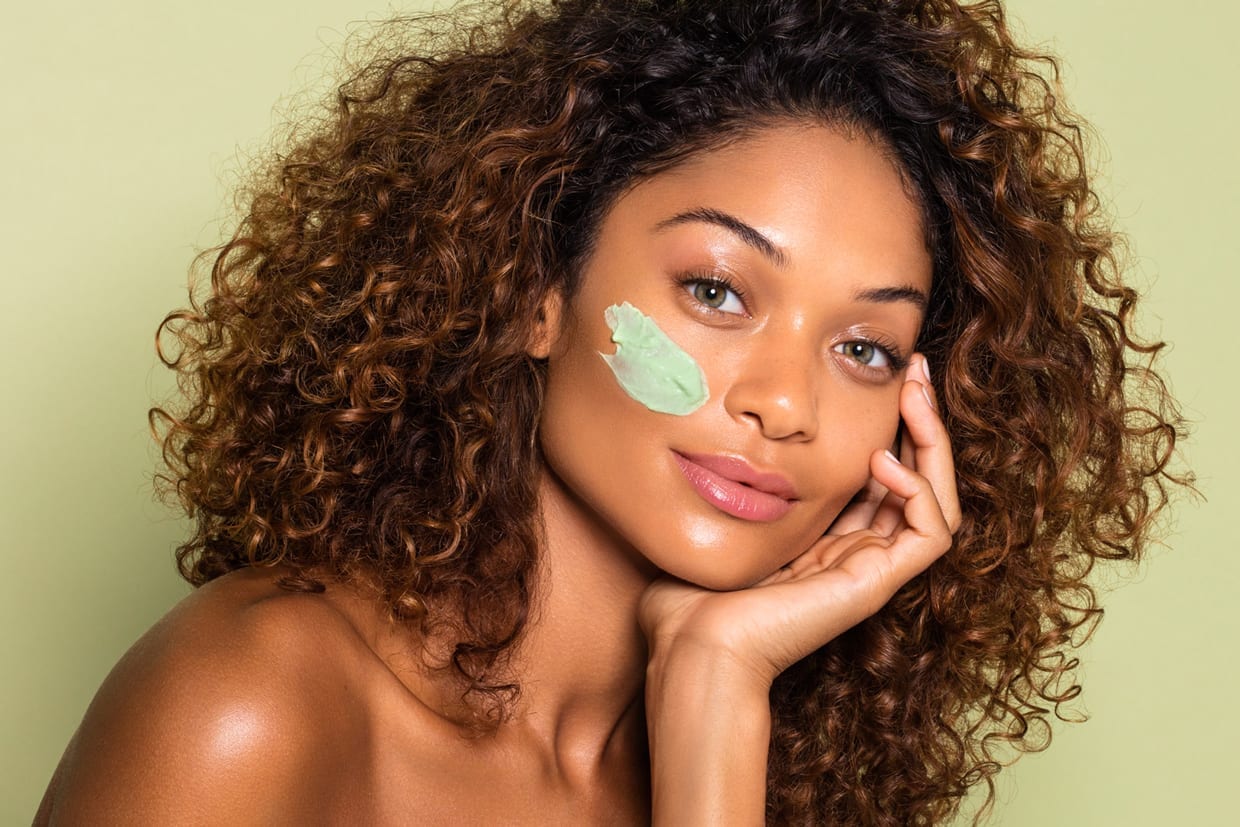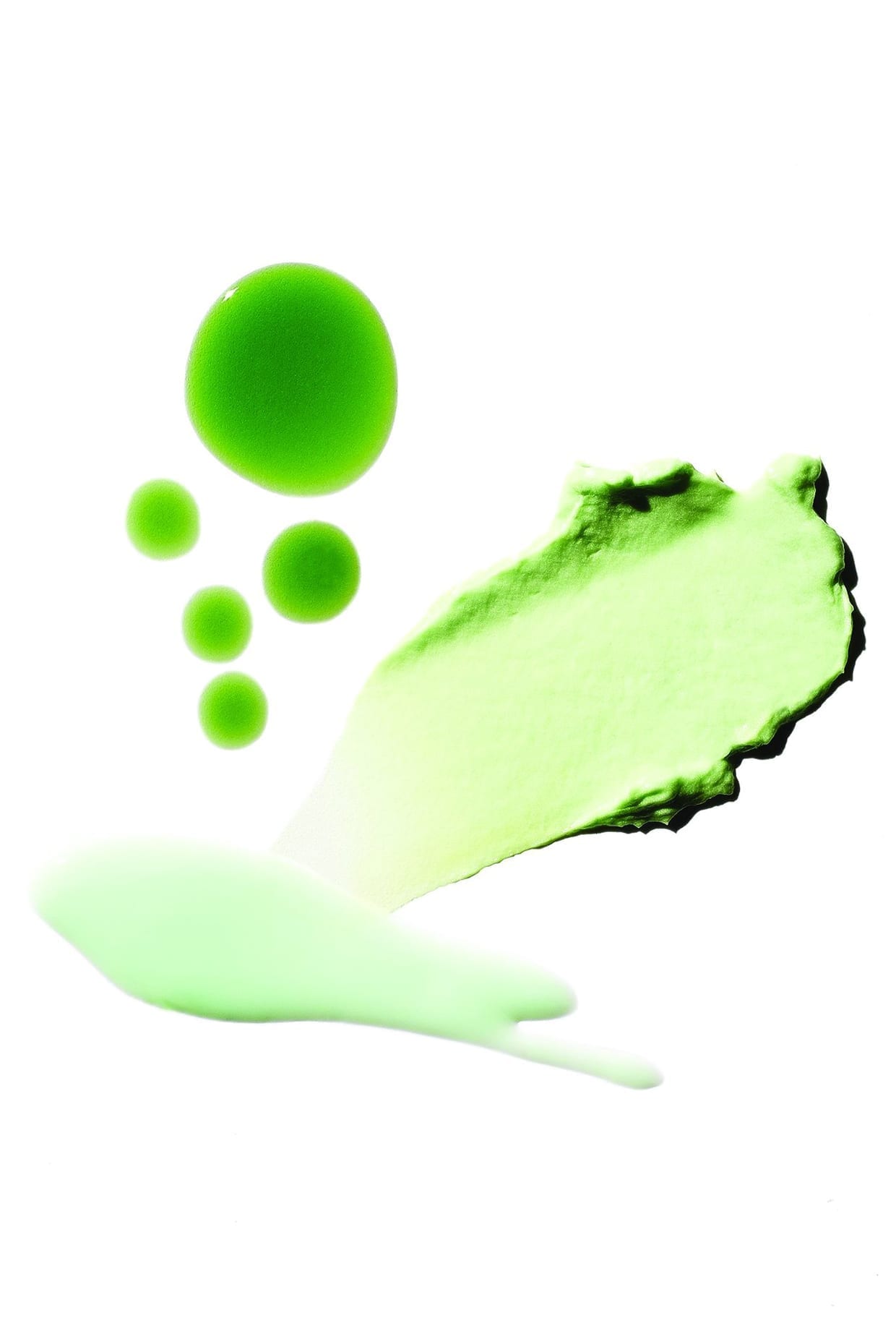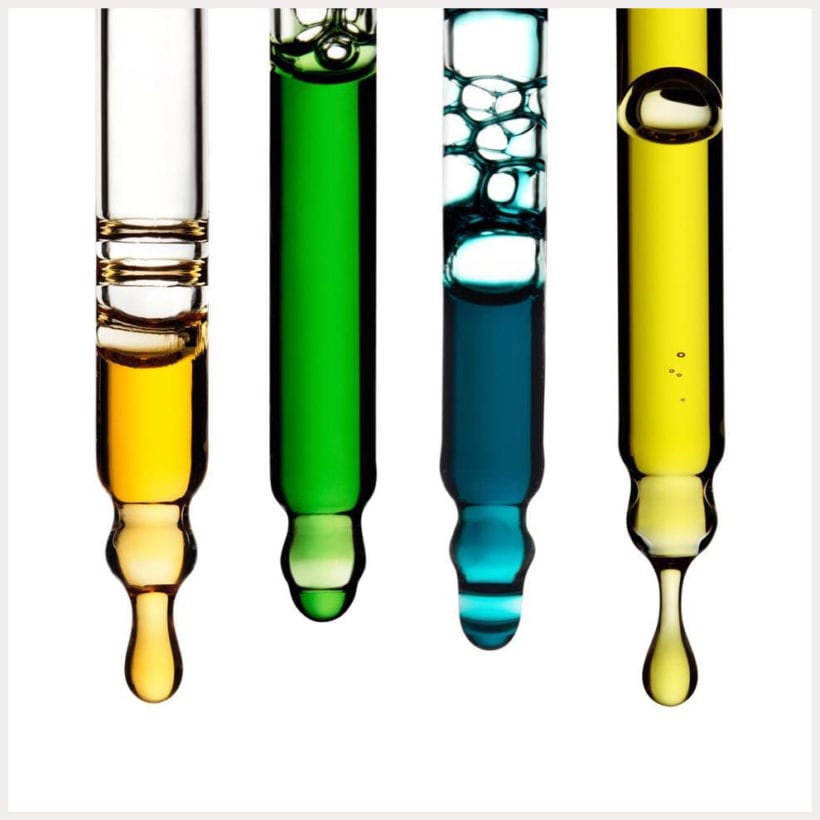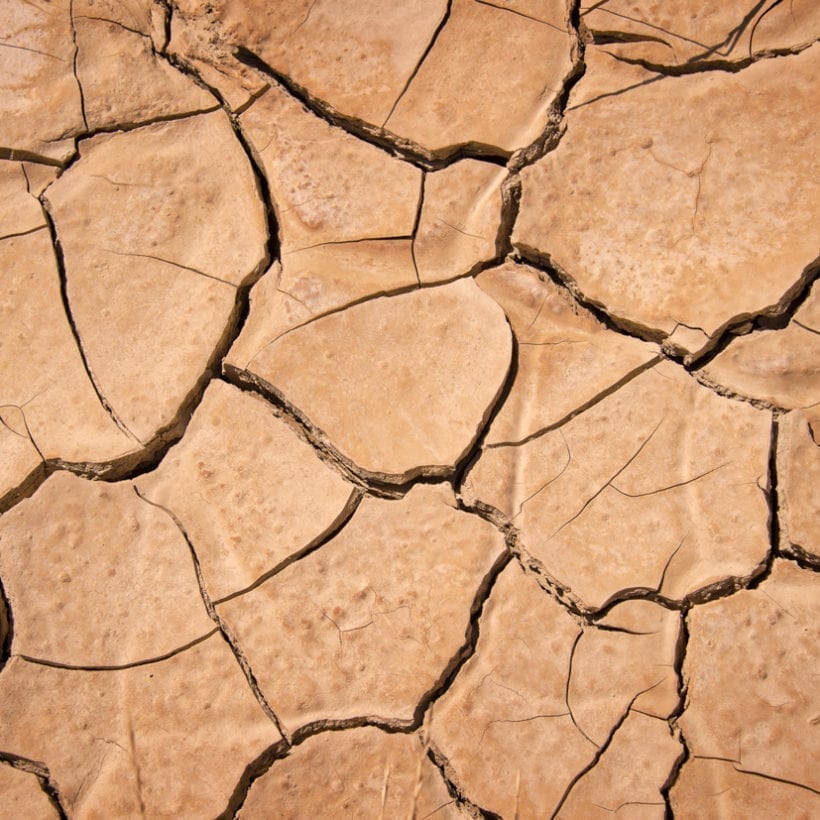Relationship with our pores? It is complicated. Large pores continue to be a pressing concern when it comes to skincare, with what seems like new products and services targeted at unclogging, cleaning, exfoliating and shrinking them popping up on the daily to meet consumers’ needs.
And since we know this complicated relationship all too well, we took to the experts to offer a deeper dive (figuratively and literally) and finally provide some clarity when it comes to all the controversy.
But let’s get one thing out of the way first: You can’t change the size of your pores. Doris Day, M.D., a New York City dermatologist, confirms that making pores look smaller is possible, but it is important to remember you can’t eliminate them. Read on as dermatologists break down everything you ever wanted to know about your pores and beyond.
You can make [your pores] appear smaller, but it is important to remember you can’t eliminate them.
What are pores?
Pores are follicles that can be found throughout most areas of the body, with the average person having about five million. “About 20,000 of these can be found on the face alone. They function similarly but tend to be much smaller and — unlike other parts of the body — often contain no hair or very fine strands known as vellus hairs,” explains Day.
There are two main types of pores. The first can be found throughout the body and is designed to allow you to excrete sweat, and is important for cooling the skin and helping to maintain and control body temperature. “When you’re hot, you sweat and, as the water evaporates off the skin, your body cools. It also helps maintain water balance throughout the body,” says Day.
The other type is found everywhere except for the lips, palms and soles and has a sebaceous gland attached to it for producing an oily substance called sebum, which helps provide hydration and protection for the skin. Sebum travels from the sebaceous gland up through the follicle (aka pore) and ends on the surface of the skin, says Day. “Sebum consists of triglycerides, wax esters, squalene and metabolites of fat-producing cells and can be helpful in guarding the skin barrier, protecting against water loss and waterproofing the skin,” she adds.
How do pores differ from person to person?
Not only do pores function differently based on where they are located on the body — oil-producing pores are typically more active on areas like the face and upper back and sweat pores more present in areas like the armpits — but activity and size can, in fact, fluctuate from person to person.
“This can depend on many factors, such as genetics, hormones and lifestyle. Women may notice they get oilier and break out more around their periods. For men, it’s mostly genetic factors that lead to issues with pores and the hormonal fluctuations around puberty,” explains Day.
What do pores actually get clogged with and how do they react?
“At the base of each follicle, a bacterium called Cutibacterium acnes (otherwise known as C. acnes, recently changed from Proprionibacterium acnes or P. acnes to C. acnes but otherwise the same organism) is also often present. This bacterium grows and flourishes only when there is little to no oxygen available. It is the main culprit that is responsible for the pimples, pustules and cysts we often see in acne,” explains Day.
According to Day, the process of all forms of acne starts when the cells that line the follicles do not slough off every month as they should during normal skin turnover. “This causes the opening of the follicle to get blocked, leading to a buildup of the contents within the pore. Additionally, the oxygen supply in the follicle gets cut off, which then allows the C. acnes to grow and flourish,” she says.

The sebum oil that the sebaceous glands produce, along with the protein that makes up the skin cells, serves as a perfect diet for the C. acnes to grow and prosper, producing more C. acnes. “At this point, the body recognizes that something is amiss and sends its army of white blood cells to survey the scene and attack as needed to clear the infection and rid the site of any foreign invaders. This leaves the skin looking red and bumpy and, often, feeling itchy or painful,” says Day.
If the C. acnes is not activated, Day explains that the contents of the follicle build up and bulge behind the blocked opening and create a lumpy, bumpy look on the surface of the skin. These bumps can be white if the opening remains blocked (often referred to as whiteheads) or turn black if the contents burst through to the surface and become oxidized when reacting with oxygen (often referred to as blackheads, which can be removed with the proper use of a pore vacuum). She also notes that, in addition to the face and back, many will typically find they are most congested on and around the nose, as it is a more vascular area and has a high concentration of pores.
Can you make pores less visible?
According to Day, certain beauty products can cause some to be oilier. “If you are using thicker, greasy products that are overly occlusive (aka pore-clogging) and are formulated with ingredients like petrolatum and waxes, you will notice an increase in the oiliness of the skin and you may notice more buildup,” she explains. “This is because the opening of the pore gets blocked and all the stuff behind it gets backlogged since it can’t be excreted onto the surface of the skin.”
If you’ve altered your beauty routine and ditched comedogenic products, you may be looking to professionals to help you handle your pores. Adarsh Vijay Mudgil, M.D., a New York City dermatologist, suggests the following treatments, which should be performed by a trained esthetician or dermatologist.
What treatments can make pores less noticeable?
- Facials can help to manually empty pores of debris in a safe and gentle way.
- Chemical peels help loosen the contents of clogged pores and exfoliate dead skin cells using acids like salicylic acid or glycolic acid, allowing pores to naturally release their contents.
- Prescription regimens typically will include retinoids to address acne-causing inflammation around hair follicles and soften the contents within pores.
- Non-ablative laser resurfacing combined with PRP. “Microscopic holes are made in the skin using a laser which penetrates into the superficial dermis (where collagen lives). By injuring existing collagen, our cells are stimulated to produce new fresh, healthy collagen,” he explains. Most patients feel the heat and a slight zapping sensation. “ After lasering, we infuse PRP into the skin using Aquagold technology, which are gold plated microchannels that facilitate the placement of PRP just under the surface of our skin.”
How do you avoid congestion?
If you tend to have oily skin, Day suggests avoiding products that contain petroleum and opting for those labeled non-comedogenic, ideally with ingredients such as salicylic acid (penetrates pores and helps exfoliate), glycolic acid (clears the surface of the skin but also helps exfoliate) and retinoic acid (helps normalize skin cell turnover, including the skin cells that line the pores, therefore helping pores appear smaller and controlling oil production). You can also incorporate a clay mask into your routine to help with absorbing excess oils and exfoliation.
And a diligent skincare routine can also go a long way. “You’ll typically want to wash twice a day and exfoliate on a regular basis. The latter will vary depending on your skin sensitivity and strength of the exfoliator from a few times a week to once every few weeks. Use a moisturizer that contains hyaluronic acid and is designed for oily skin, like a lotion or gel,” Day explains, warning that you should be cautious of over-washing or exfoliating, which can be counterproductive.
As with any skincare routine, Day says sun protection is also non-negotiable. “Sun exposure cooks the water out of your skin, which dries it. This stimulates the sebaceous glands to produce more oil to try to protect the skin against water loss. The increased oil production requires the oil glands to overgrow and that makes the pores bigger. It can also lead to increased acne,” she adds.
And while Day says the impact of diet is still a bit controversial, it is thought by some that eating a diet higher in antioxidants and lower in sugar and processed foods are anti-inflammatory and can be helpful in issues relating to acne and pores.
In terms of treatments, Adarsh Vijay Mudgil, M.D., a New York City dermatologist, says facials (which can unclog pores by essentially squeezing the pore contents out), chemical peels (which help loosen the contents of clogged pores and exfoliate dead skin cells using acids like salicylic acid or glycolic acid, allowing pores to naturally release their contents) and a prescription regimen (which typically will include retinoids to address acne-causing inflammation around hair follicles and soften the contents within pores) overseen by a board-certified dermatologist are all helpful when over-the-counter products do not do the trick.
“Another popular treatment we use in my office to address pore size is combining non-ablative fractional laser resurfacing with a local application of platelet-rich plasma (PRP) — this has worked wonders for many of my patients,” says Mudgil.
And remember, while you might be able to shrink the appearance of pores, Day said, “they can unshrink if the oil glands are stimulated to overproduce sebum again.”
Best ingredients, treatments, & lifestyle tips for refining pores
Just as what you eat has a major impact on how you feel, the ingredients you feed your skin will influence not only how your skin feels, but how it looks —pore size and all. Below Day share what skincare and makeup ingredients to look for (and what to avoid) in your quest to make your pores less visible, plus easy lifestyle tweaks to make when trying to reduce the appearance of pores.
- Use salicylic acid. It penetrates pores and helps exfoliate. Glycolic acid clears the surface of the skin but also helps exfoliate, Day says. Retinoic acid “helps normalize skin cell turnover, including the skin cells that line the pores, therefore helping pores appear smaller and controlling oil production.” “Use a moisturizer that contains hyaluronic acid and is designed for oily skin, like a lotion or gel,” Day says.
- Incorporate a clay mask into your routine. It will help with absorbing excess oils and exfoliation.
- Use SPF every day. “Sun exposure cooks the water out of your skin, which dries it. This stimulates the sebaceous glands to produce more oil to try to protect the skin against water loss. The increased oil production requires the oil glands to overgrow and that makes the pores bigger. It can also lead to increased acne,” Day says.
- Be diligent with your skincare routine. You’ll typically want to wash twice a day and exfoliate on a regular basis. The latter will vary depending on your skin sensitivity and strength of the exfoliator from a few times a week to once every few weeks. Day warns that you should be cautious of over-washing or exfoliating, which can be counterproductive.
- Look at your diet. The impact of diet on skin is still a bit controversial, Day says that it is thought by some that eating a diet higher in antioxidants and lower in sugar and processed foods are anti-inflammatory and can be helpful in issues relating to acne and pores.








